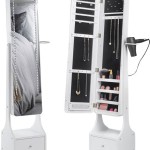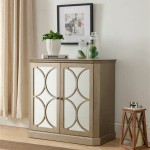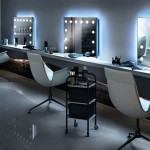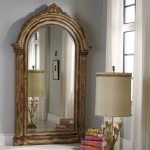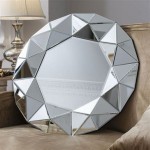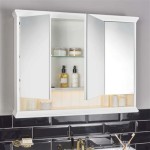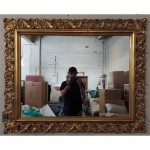Two-Way Mirror Restrooms: Privacy Concerns and Legal Implications
Two-way mirrors, also known as one-way mirrors, have long been a source of anxiety and privacy concerns, particularly when used in sensitive locations like restrooms. These mirrors, when installed correctly, create the illusion of a reflective surface from one side while allowing for observation from the other. This article explores the issues surrounding two-way mirrors in restrooms, addressing legal and ethical considerations, detection methods, and preventive measures.
Understanding Two-Way Mirrors
A two-way mirror is a piece of glass coated with a thin layer of metallic material. This coating allows some light to pass through while reflecting the rest. When one side is brightly lit and the other is dimly lit, the mirror appears reflective on the brighter side, allowing someone on the darker side to see through. This principle is utilized in various settings, including police interrogation rooms and scientific observation. However, the use of such mirrors in restrooms raises serious privacy concerns.
Legal and Ethical Implications
The legality of using two-way mirrors in restrooms varies depending on jurisdiction. In many places, it is illegal to install these mirrors in areas where individuals have a reasonable expectation of privacy, such as restrooms, changing rooms, and showers. Secretly observing individuals in these private settings is considered a violation of privacy and can lead to criminal charges. Ethically, the use of two-way mirrors in restrooms is highly questionable, even if not explicitly illegal in a particular area. It represents a breach of trust and can cause significant emotional distress to those unknowingly observed.
Detecting Two-Way Mirrors
Several methods can be used to determine if a mirror is a two-way mirror. These methods are relatively simple and can be performed by anyone suspicious of a mirror's reflectivity.
Methods for Detecting Two-Way Mirrors
Several methods can be used to detect the presence of a two-way mirror:
The Fingernail Test
Place your fingernail against the surface of the mirror. If there is a gap between your fingernail and its reflection, it is likely a regular mirror. If the reflection touches your fingernail directly, with no noticeable gap, there's a possibility it is a two-way mirror. This test isn't foolproof, as the gap can be minimal with some regular mirrors, but it can be a helpful initial indicator.
The Light Test
This method involves turning off the lights on the side you are on and using a flashlight to illuminate the mirror's surface. If there is an observation area behind the mirror, the light may reveal the room or people present on the other side. This test is most effective in completely dark environments.
The Sound Test
Knock on the mirror surface. A regular mirror will produce a dull thud, while a two-way mirror, often thinner due to its construction, might produce a brighter, hollower sound. This, again, is not a definitive test but can contribute to overall suspicion.
Observing the Surroundings
Look for any unusual features around the mirror, such as small holes or inconsistencies in the wall or ceiling. These could be indications of hidden cameras or observation points. Consider the overall layout of the restroom – does anything seem out of place or unusual? Trust your instincts; if something feels off, it's worth investigating further.
Protective Measures and Reporting
If you suspect the presence of a two-way mirror in a restroom, several steps can be taken to protect yourself and others.
Immediate Actions
Avoid undressing or engaging in any private activities in front of the suspected mirror. If possible, notify the establishment's management or security personnel immediately. It is crucial to document your observations and concerns, including the location of the mirror and any suspicious features.
Reporting to Authorities
If your concerns are not addressed adequately by the establishment, contact local law enforcement. Provide them with all the details you have gathered, including any photographs or videos you may have taken. They can investigate the situation and determine if any laws have been violated.
Advocating for Privacy
Spread awareness about the potential misuse of two-way mirrors and encourage others to be vigilant. Support legislation that strengthens privacy protections in public spaces. By being informed and proactive, individuals can contribute to creating safer and more secure environments for everyone.
Public Awareness and Education
Raising public awareness about the existence and potential misuse of two-way mirrors is essential. Educating individuals about the detection methods and encouraging vigilance can empower them to protect their privacy. This awareness can also deter the illegal installation of these mirrors in the first place.

Mirror Public Bathrooms Exotic Places Two Way

A New Way To View London From Toilet

Bar Owner Defends Two Way Mirror In Women S Restroom After Comedian Exposes It Cbc News

Woman S Tiktok Exposes Terrifying Bathroom Feature

Sulphur Springs S Glass Walled Public Toilet Vies To Succeed Buc Ees As America Best Restroom Monthly

A New Way To View London From Toilet

Woman Discovers Two Way Mirror In Bar Bathroom The Owner Isn T Even A Little Bit Sorry About It

Sulphur Springs S Glass Walled Public Toilet Vies To Succeed Buc Ees As America Best Restroom Monthly

Sleek And Modern Two Way Mirror Public Restroom

Two Way Mirror Found In Bar S Bathroom Stall

